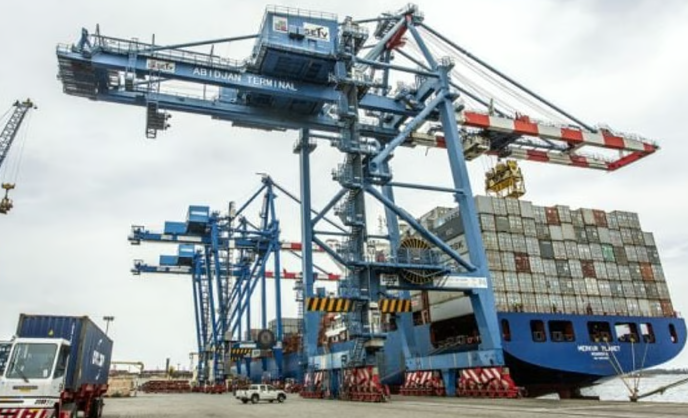Fast-Moving Storms: Protecting Yourself From High Winds

Table of Contents
Understanding the Dangers of Fast-Moving Storms
Fast-moving storms, including severe weather events like derechos, tornadoes, and microbursts, are characterized by their speed and intensity. Unlike slower-moving systems that provide more time for preparation, these storms can strike with little warning, unleashing powerful gusts of wind that can reach hurricane-force speeds.
- Speed and Impact on Preparedness: The rapid approach of these storms significantly limits preparation time. Knowing the warning signs and having a pre-prepared plan is paramount.
- Dangers of High Winds: High winds pose numerous threats, including flying debris (which can cause serious injury or damage), power outages leaving you vulnerable and in the dark, and structural damage to your home, potentially leading to collapse.
- Types of Fast-Moving Storms and Unique Hazards: Different types of fast-moving storms have unique characteristics. Tornadoes are characterized by their rotating winds and concentrated destructive power. Derechos are widespread, long-lived wind storms, and microbursts are intense, localized downdrafts that can cause significant damage in a small area. Understanding these variations helps you better assess the specific risks in your region.
Preparing Your Home for High Winds
Proactive storm preparedness is key to minimizing damage and ensuring your safety during fast-moving storms. Securing your property before a storm hits significantly reduces the risk of wind damage.
- Trimming Trees and Securing Loose Objects: Trim overhanging branches that could fall and damage your home or become dangerous projectiles. Secure any loose objects in your yard, such as patio furniture, garbage cans, and garden decorations.
- Protecting Windows and Doors: Reinforce windows and doors with storm shutters or plywood. This helps prevent shattering and keeps wind-driven debris from entering your home.
- Reinforcing Your Roof and Garage: Ensure your roof is in good condition and properly secured. A strong, well-maintained roof is essential to withstand high winds. Reinforce your garage door, as it's a common point of vulnerability.
- Creating a Safe Room or Designated Shelter: Identify a safe room within your home—ideally an interior room on the lowest level—away from windows. This room should be sturdy and able to withstand high winds.
- Developing an Emergency Communication Plan: Establish a communication plan with family members in case of separation during the storm. Include contact information and meeting points.
Creating an Emergency Preparedness Kit for Fast-Moving Storms
A well-stocked emergency kit is crucial for survival during and after a fast-moving storm, especially when power is out and access to resources is limited.
- First-aid supplies and medications: Include a comprehensive first-aid kit with bandages, antiseptic wipes, pain relievers, and any necessary prescription medications.
- Water, non-perishable food, and a manual can opener: Stock up on at least a three-day supply of water and non-perishable food items that require minimal preparation.
- Flashlights, batteries, and a portable radio: Flashlights and a portable radio are essential for communication and illumination during power outages. Keep extra batteries on hand.
- Blankets, warm clothing, and rain gear: Pack blankets for warmth and rain gear to protect yourself from the elements.
- Important documents (insurance, identification): Keep copies of important documents in a waterproof container.
Staying Safe During a Fast-Moving Storm
When a fast-moving storm strikes, your actions can significantly impact your safety. Prioritizing safety is paramount.
- Staying indoors in a safe room, away from windows: Seek shelter immediately in your designated safe room, away from windows and exterior walls.
- Turning off utilities if instructed: If authorities advise you to turn off gas, electricity, or water, do so immediately.
- Monitoring weather reports: Stay informed about the storm's progress by monitoring weather alerts and reports from reliable sources.
- Knowing the location of your designated shelter: Ensure everyone in your household knows the location of your safe room and understands the emergency plan.
- Avoiding driving or walking during the storm: Never attempt to drive or walk during a high-wind event. Strong winds can make it extremely dangerous.
Post-Storm Actions: Assessing Damage and Seeking Help
After the storm has passed, carefully assess the damage and take the necessary steps for recovery.
- Checking for injuries and providing first aid: Check for injuries and administer first aid as needed. Seek medical attention for serious injuries.
- Inspecting your home for damage: Carefully inspect your home for damage, taking photos to document any damage for insurance purposes.
- Reporting downed power lines and other hazards: Report downed power lines and other hazards to the appropriate authorities immediately.
- Contacting insurance companies and emergency services: Contact your insurance company to report any damage and seek assistance from emergency services if needed.
- Understanding debris cleanup procedures: Follow local guidelines and regulations for debris removal and cleanup.
Conclusion
Protecting yourself from the dangers of fast-moving storms and high winds requires proactive preparation and careful planning. By taking the steps outlined above—preparing your home, creating an emergency kit, and knowing how to stay safe during and after a storm—you can significantly reduce your risk and ensure the safety of your loved ones. Prepare for fast-moving storms today; protect yourself from high winds and stay safe during high winds by implementing these vital safety measures. For more information on storm preparedness in your area, check your local emergency services website.

Featured Posts
-
 Breite Efimereyonta Giatro Stin Patra 10 And 11 Maioy
May 20, 2025
Breite Efimereyonta Giatro Stin Patra 10 And 11 Maioy
May 20, 2025 -
 Port Autonome D Abidjan 28 33 Millions De Tonnes Traitees En 2022
May 20, 2025
Port Autonome D Abidjan 28 33 Millions De Tonnes Traitees En 2022
May 20, 2025 -
 Rey Fenix Officially Joins Wwe Smack Down Next Week
May 20, 2025
Rey Fenix Officially Joins Wwe Smack Down Next Week
May 20, 2025 -
 Agatha Christie Une Vie D Aventures Et De Mysteres L Integrale
May 20, 2025
Agatha Christie Une Vie D Aventures Et De Mysteres L Integrale
May 20, 2025 -
 Rodenje Drugog Djeteta Jennifer Lawrence Detalji I Potvrde
May 20, 2025
Rodenje Drugog Djeteta Jennifer Lawrence Detalji I Potvrde
May 20, 2025
Latest Posts
-
 How A Billionaire Boy Shapes The World Philanthropy Power And Politics
May 20, 2025
How A Billionaire Boy Shapes The World Philanthropy Power And Politics
May 20, 2025 -
 Billionaire Boy Exploring The Challenges And Responsibilities Of Extreme Wealth
May 20, 2025
Billionaire Boy Exploring The Challenges And Responsibilities Of Extreme Wealth
May 20, 2025 -
 Understanding The Billionaire Boy Phenomenon Family Fortune And Future
May 20, 2025
Understanding The Billionaire Boy Phenomenon Family Fortune And Future
May 20, 2025 -
 The Life And Times Of A Billionaire Boy Inheritance Influence And Impact
May 20, 2025
The Life And Times Of A Billionaire Boy Inheritance Influence And Impact
May 20, 2025 -
 79 Manazerov Uprednostnuje Osobne Stretnutia Home Office Vs Kancelaria
May 20, 2025
79 Manazerov Uprednostnuje Osobne Stretnutia Home Office Vs Kancelaria
May 20, 2025
